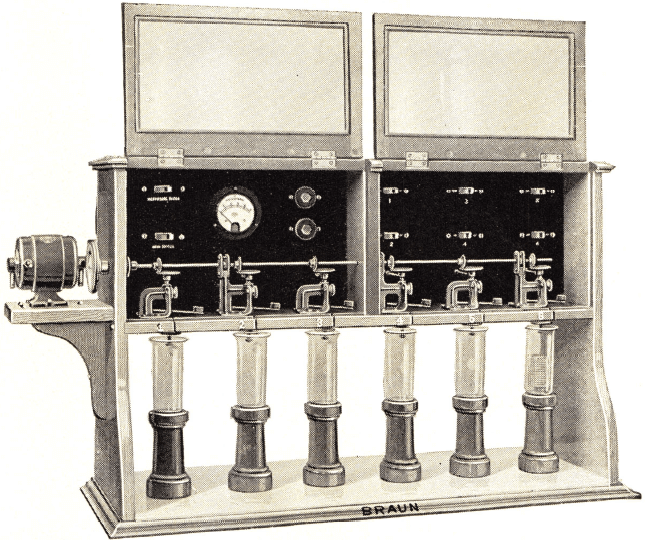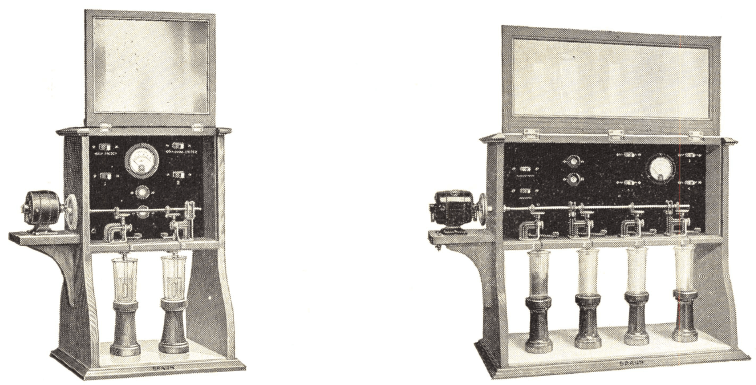BRAUN ELECTROLYTIC APPARATUS for making electrolytic determinations of copper, lead, antimony, cadmium, nickel, tin, zinc, and other metals was the pioneer in its field and for twenty years it has maintained its worldwide leadership. Many of the original sets are still in satisfactory operation.
The latest, improved design, the Model CB, like its predecessors, is substantially constructed for maximum efficiency and satisfaction. Wherever a large amount of routine work must be handled, where time saving is essential, where rapid, uniform and accurate analyses are demanded, the improved Model CB is proving itself indispensable.
Simplicity and Convenience Are Outstanding Features
- Stirring. Agitation is simple, direct and efficient by rotation of the electrode itself. No supplementary mechanism required.
- Drive. Universal motor—one line shaft for all units with unique self-aligning bearings. Separate friction drive from shaft for each unit with simple positive cut-outs so that units may be rotated independently.
- Controls. Tumbler switches, fuses and ammeter enclosed behind glass are all flush mounted on a black bakelite panel—grouped for easy access and convenient use.
- Speed of rotation is regulated by a master rheostat in series with drive motor.
- Electrolysis Current. Units are purposely in series so that current is read by one ammeter and controlled by one rheostat for all units. Each unit has a separate current cut-off switch. One master switch reverses the current for all units. These features simplify and speed up the heavy routine work for which Model CB is designed.
- Fume Protection. Cabinet of oak; heavily covered with acid-proof varnish. Metal parts, except motor, electrodes and holders, enclosed and protected by hinged glass doors. The under side of control cabinet is protected by aluminum—binding posts are of the same metal. Base is covered by a plate of white opalite.
- Motor and Wiring. Regular equipment includes a 110-volt Universal AC and DC motor (motor for 220 volts can be supplied if desired, at same price), wired for 5 amperes, which will cover all ordinary requirements. Special purpose sets wired for heavier amperage can be supplied on special order.
- Current Supply. Direct current is necessary for electrolysis. Where alternating current only is available a motor generator set is required to convert alternating current to direct.
- Dimensions and Prices. Cabinets equipped with motor, ammeter, two rheostats (one for motor control and one for electrolysis current), but without platinum anodes and cathodes or motor generator.

VOLT-AMMETER, Pocket Form—With double scale and three posts to provide for measuring both voltage and amperage with the one instrument. Range: 0 to 10 volts; 0 to 35 amperes.

